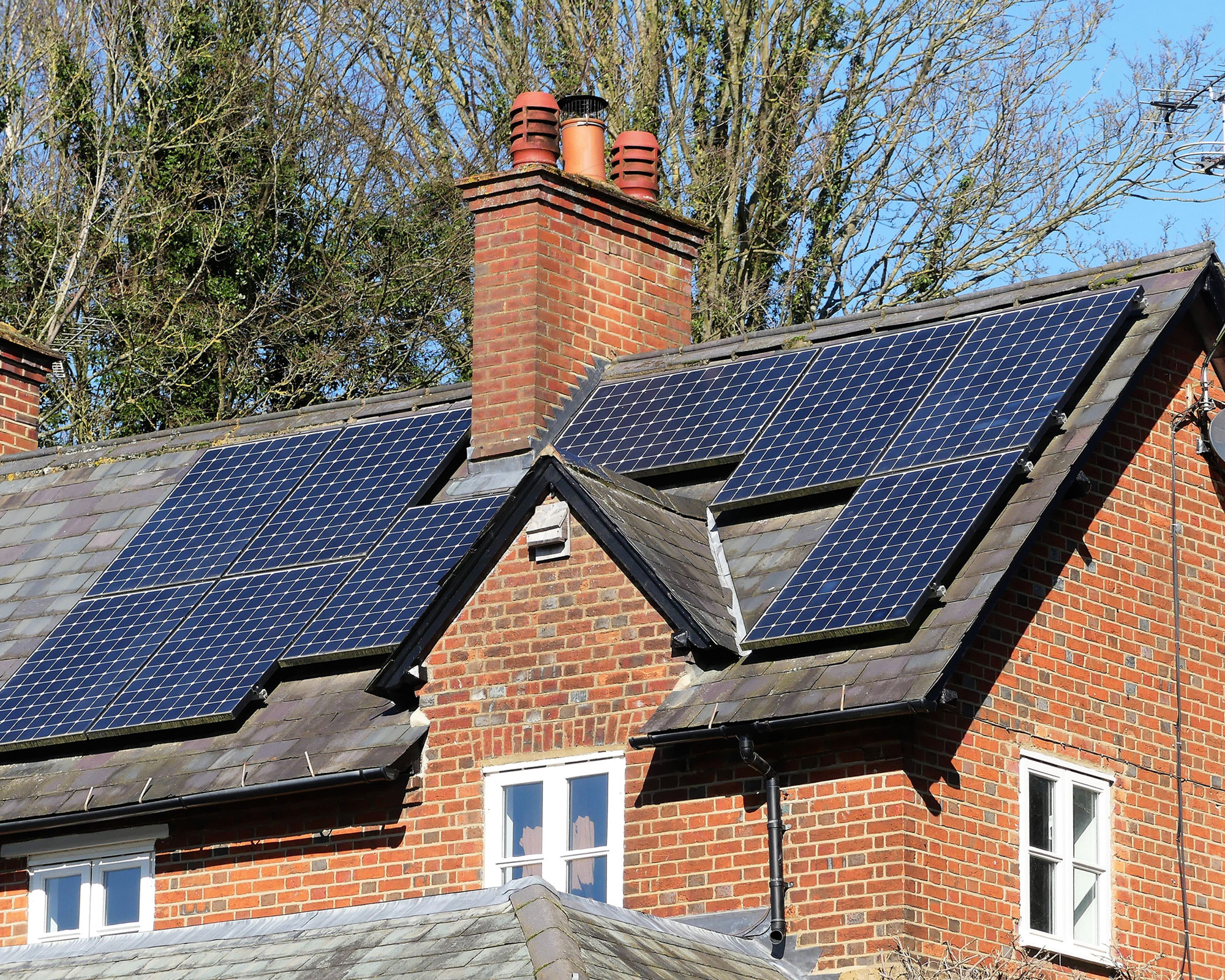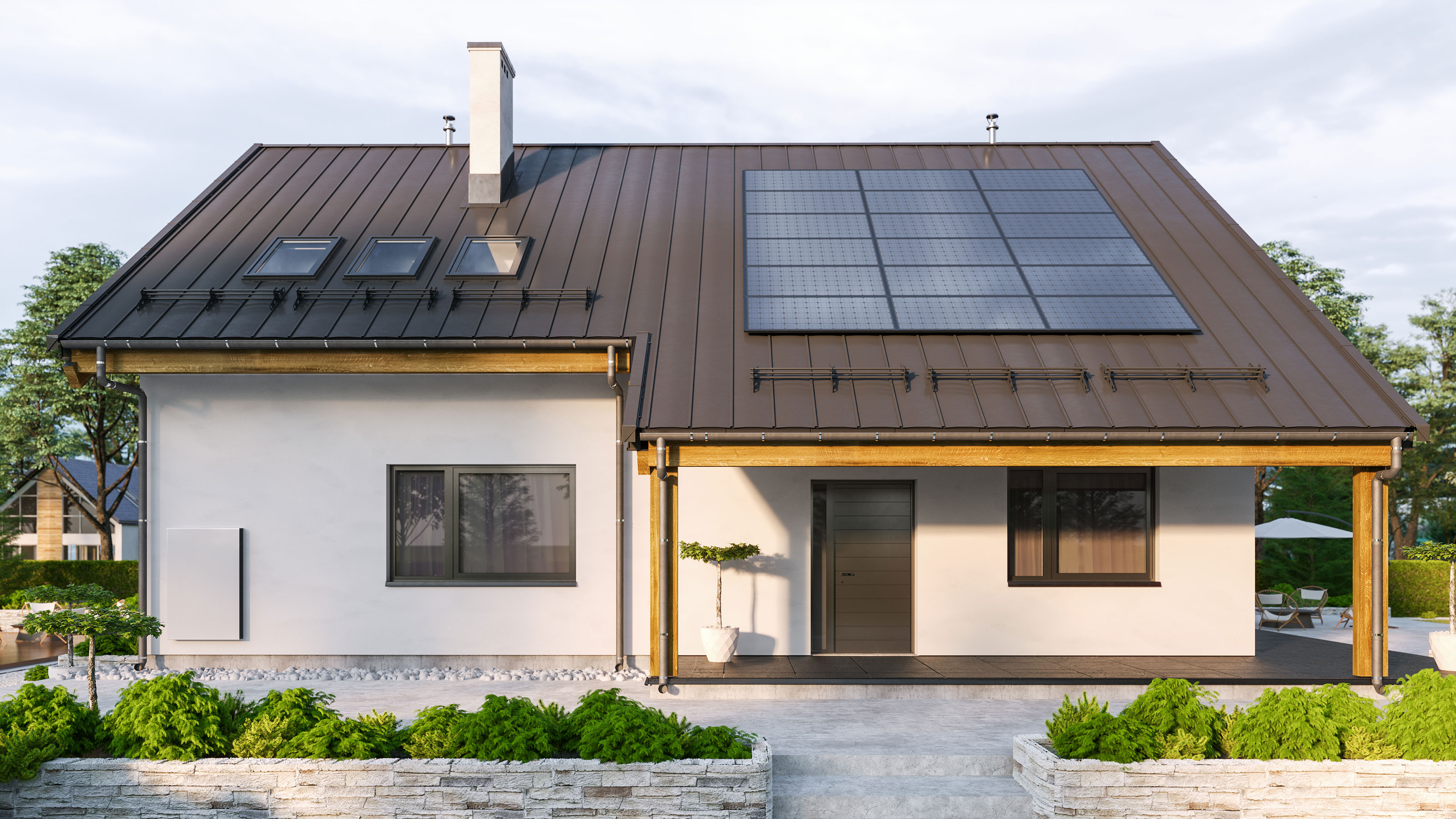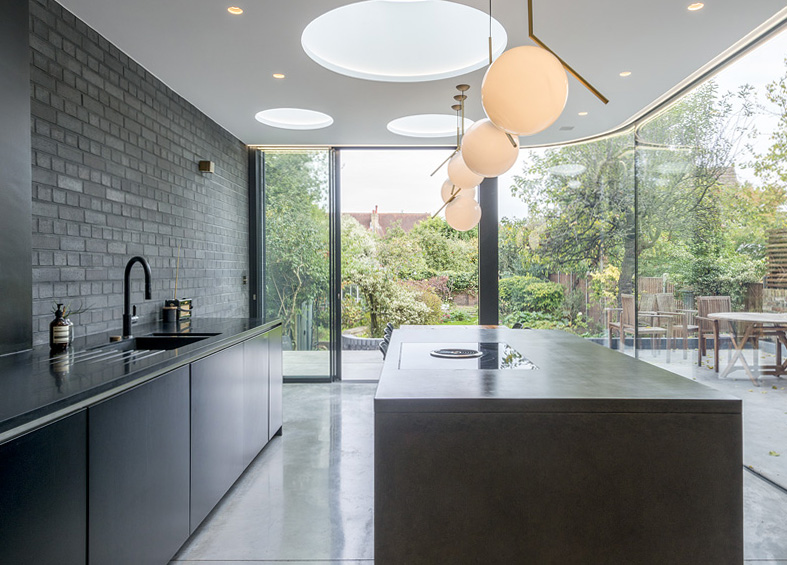

How much do solar panels cost? They’re a technology more and more people are adopting in order to reduce energy bills and lessen the environmental impact of running a home.
But while they may save you money in the long term, solar panels come with costs for the panels themselves and their installation, and it’s important to be aware of what you can expect to pay.
To help you budget, we’ve put together an expert guide to solar panels cost whether you’re considering solar thermal versions as one of the types of heating for your home, or solar photovoltaic (PV) panels.
How much do solar panels cost?
What you can expect in terms of solar panel costs will depend on the size of the system you install as well as the type. ‘Solar panel supply and installation costs will vary, but you can look to pay anywhere between £5,000 to £8,000 for a photovoltaic (PV) system and £4,000 to £5,000 for a solar thermal system,’ say the experts at Checkatrade.
How much do solar PV panels cost?
Solar PV panels are used to generate electricity.
The capacity of the system will determine the cost of solar PV panels. ‘Solar PV is typically sold by the kilowatt of install capacity for domestic properties,’ says Steve Alldritt, technical director of energy efficiency at City Plumbing. ‘Generally, the price, inclusive of fitting, is around £1,500 per kilowatt, so for 4kW systems homeowners can expect to be looking at a cost of around £6,000.
‘Historically, most homes in the UK would not exceed 4kW of capacity on the roof because the government’s feed-in tariff, a scheme which paid homeowners a subsidy for the electricity they generated, paid the highest rate on systems up to this size,’ he explains.
‘However, since 2019 when the scheme ended, we have begun to see larger installations take place. Usually, solar PV systems are now anywhere between 4kW and 6kW systems as homeowners look to install additional panels to benefit from additional electricity produced for their homes. It’s worth bearing in mind however that systems over 4kW require permission from their district network operator (DNO) in order to connect to the local grid so always seek this permission before making an investment.
It could be a good strategy to opt for a larger system. ‘The fitting costs tend to be roughly the same regardless of the amount of panels that need to be installed,’ explains Steve.
Bear in mind that there are factors that can elevate costs. ‘Those considering PV need to make sure their roof is structurally sound – it is worth considering the age of your roof before installing the PV, as the system may need to be removed when the roof is replaced,’ says Steve. ‘Access to the roof also needs to be considered as this can affect the cost of the installation.
‘The home’s electrical system will also need to be sufficiently equipped with modern consumer units and circuit protection. More commonly needed in older properties, these necessary electrical upgrades may result in additional costs.’
How much can you save with solar PV panels?
When you’re deciding whether the cost of solar panels is worth it, you’ll want to factor in how much they are likely to save you. If you live in London, for example, you might save between £170 and £415 annually without the smart export guarantee (SEG) (see below), according to the Energy Saving Trust (EST).
The feed-in tariff (see above) closed to new applications in March 2019, but the SEG offers the opportunity to be paid for exporting energy. ‘The feed-in tariff has now been replaced by the smart export guarantee, where some electricity suppliers will pay homeowners for any low-carbon electricity they export back to the National Grid,’ says Steve Alldritt. ‘The average home can make £112 per year through the SEG.’
Therefore, when you combine the savings of generating your own electricity, and the pay for exporting back to the grid, you could make as much as £527 per year. This means it will take 10 to 15 years to earn back your initial outlay, not including any added wiring or roof upgrades.
How many solar PV panels do you need to make the project worthwhile?
To find out the possible savings benefits of the project specific to your home, use the calculator from the EST.
Bear in mind that going bigger can be better. ‘Larger systems have been found to generate as much as 4kWp which is capable of supplying the energy needed by a family of three or four,’ says Jess Steele, heating expert at BestHeating.
How much do solar thermal panels cost?
Solar thermal panels use the energy of the sun to heat water. As for costs, when considering installing these it’s important to bear in mind your existing set up and know what type of boiler you have (or alternative for heating hot water). ‘The UK’s boiler market in the last 30 years has shifted to a place where most homes use a combi boiler and don’t require a hot water cylinder,’ explains Steve Alldritt. ‘Solar thermal however, requires a cylinder to store the heat that’s generated so the space where this would need to be fitted is crucial.
‘Not all cylinders are created equal either, so homeowners who do have a cylinder fitted will need to ensure it is solar compatible as this may require an upgrade as part of the installation.’
As for the cost of solar thermal panels? ‘Typically, with the install and cylinder swap, homeowners are looking at around £4,500 to install solar thermal to their property,’ says Steve.
How much can you save with solar thermal panels?
Annual savings resulting from the installation of solar thermal panels vary, according to the fuel type used in your existing system. A saving of £95 per year is possible if your system is gas, and £150 if it’s oil, according to the EST.
There is currently no payback system for generating your own heat with solar panels, as the government closed the Renewable Heat Incentive to domestic applicants in March 2022. Therefore it takes at least 30 years for solar panels to pay for themselves on savings alone.
How many solar thermal panels do you need to make the project worthwhile?
Take advice from a certified installer accredited through the Microgeneration Certification Scheme (MCS) when considering solar thermal. However, you should be aware that, in the UK, solar thermal panels will not provide all of your hot water.
‘You’ll need to heat the water further with a boiler or immersion heater, especially during the winter months,’ explains the EST. ‘In the summer, it should provide around 90 per cent of your hot water requirements, dropping to around 25 per cent in the winter.’
How many solar panels are needed to power a typical house?
How many solar panels are needed is influenced by the size of the house. ‘On average, a standard one bedroom house would need to use six panels. If you have a three bed home, it will need 10 panels. For a five bedroom home, you’d need 14 panels for it to be worthwhile,’ says heating engineer and solar panel installer Nathan Hyatt-Mitchell, who features on Rated People.
Are solar panels expensive to run and buy?
Solar panels are expensive to buy in the first place. However, the expenditure can be justified in the long term by savings on energy bills. Key to your calculations should be whether you are planning to stay put in your current home, however.
‘Someone that is likely to move within the next decade likely won’t recoup the costs from the initial outlay,’ says Jess Steele.
Anyone looking to be in their home for at least 10 years should definitely consider the economical (and ecological) incentives of installing solar PV. While solar thermal takes longer to pay for itself, it is still a good option for those looking for sustainable home improvements to reduce their dependence on other fuel sources.
Join our newsletter
Get small space home decor ideas, celeb inspiration, DIY tips and more, straight to your inbox!

Sarah is a freelance journalist and editor writing for websites, national newspapers, and magazines. She’s spent most of her journalistic career specialising in homes – long enough to see fridges become smart, decorating fashions embrace both minimalism and maximalism, and interiors that blur the indoor/outdoor link become a must-have. She loves testing the latest home appliances, revealing the trends in furnishings and fittings for every room, and investigating the benefits, costs and practicalities of home improvement. It's no big surprise that she likes to put what she writes about into practice, and is a serial house revamper. For Realhomes.com, Sarah reviews coffee machines and vacuum cleaners, taking them through their paces at home to give us an honest, real life review and comparison of every model.
-
 How much do solar panels cost to install? Average prices 2022 and why it's worth it
How much do solar panels cost to install? Average prices 2022 and why it's worth itWhether you want to save on your monthly power bill or secure a future with no power outages, the cost of solar panels may well be worth it long-term.
By Carol J. Alexander
-
 How to extend a house – an expert guide to planning your extension
How to extend a house – an expert guide to planning your extensionUse this expert guide for an A-Z on how to extend a house successfully. From good planning to design know-how and more – get it right from the start
By Sarah Warwick
-
 Home renovation costs: how much does it cost to renovate a house?
Home renovation costs: how much does it cost to renovate a house?Our guide to home renovation costs will help you budget accurately and trim costs as required
By Liz Walker